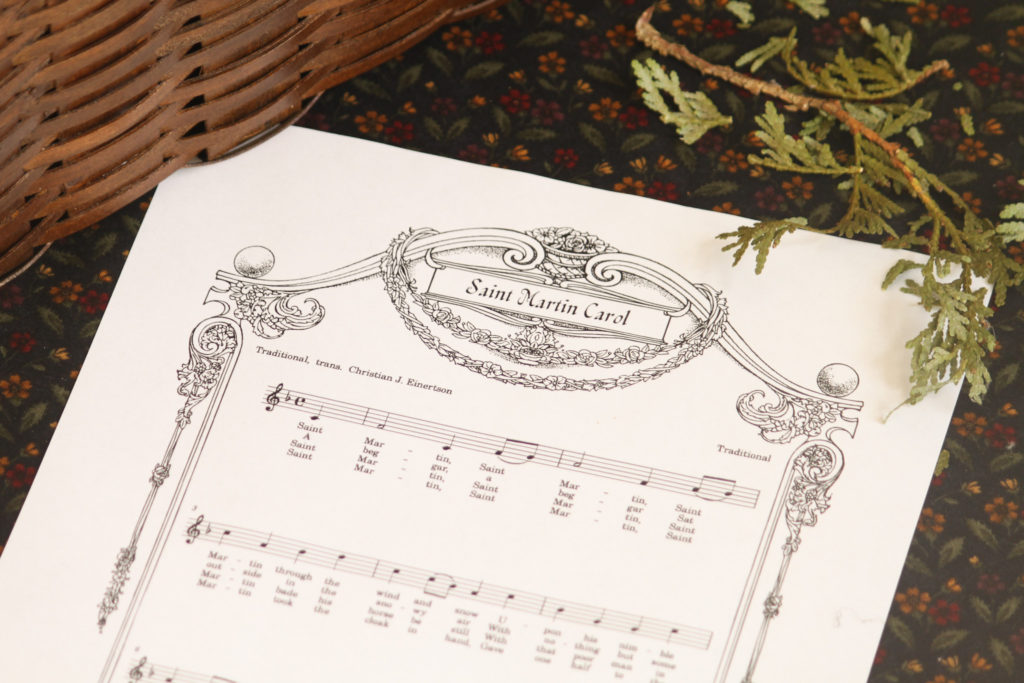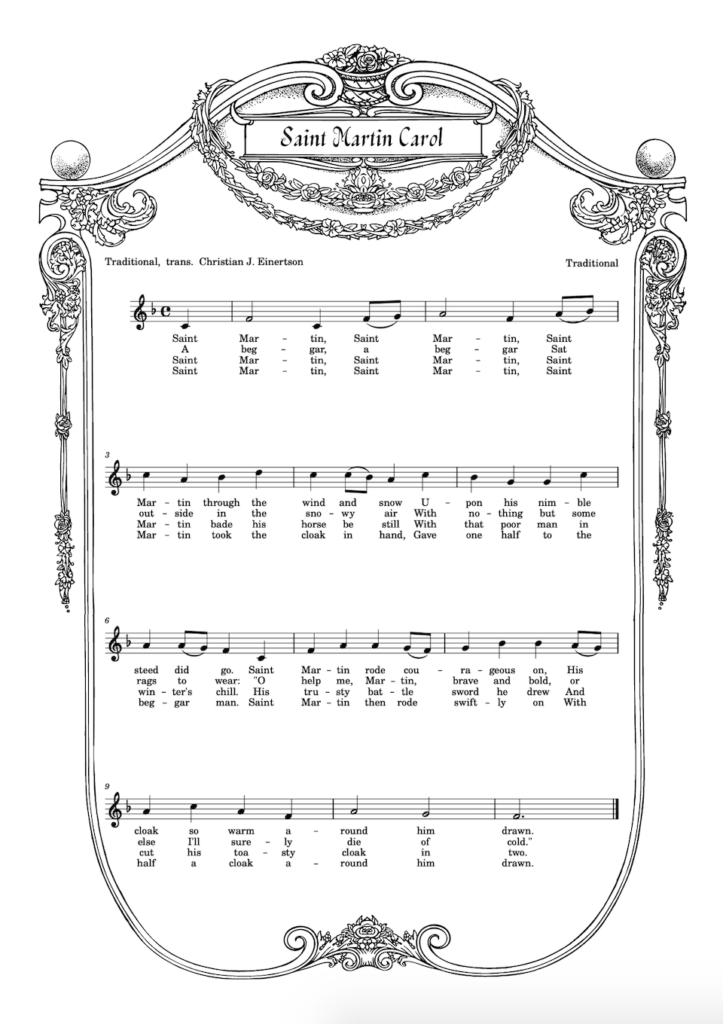
History
As we mentioned in our previous post, St. Martin’s Day has long been one of the most beloved saints’ days in the Western Church. Because of how beloved it is and how widely it has been celebrated, the traditions for the day are many! We’ll try to focus in on a few of the big ones.
Traditional Food
To begin with a traditional food, St. Martin’s Day has often been celebrated with a goose in historically Lutheran countries like Germany and Sweden. The festive tradition of the St. Martin’s Goose is almost certainly tied to the observance of St. Martin’s Day as the last big feast before the Advent fast, but it is also connected to the story of St. Martin’s life. An old poem points out that it was a goose that betrayed St. Martin as he tried to hide and avoid being made bishop of Tours:
Now, because that Gick-gack-lay
Did this Holy Man bewray,
Goose in pen and goose on grass
Need beware of Martin-Mass.
Silly flock, the poulterer’s knife
Seeketh for to take your life.
Bonfires & Carols
Yet food is not the only tradition associated with St. Martin’s Day. Much like on St. John’s Eve, Christians have also celebrated St. Martin’s Eve with bonfires, a symbol of the light in darkness that St. Martin’s good deeds brought to those in need.
Connected with this theme of light and darkness is the tradition of St. Martin’s lanterns. On St. Martin’s Eve, children throughout Germany have historically lit lanterns (often made in school) and walked through the streets of town singing St. Martin’s Carols at people’s houses in exchange for sweet treats. This tradition is still observed in some Lutheran communities in Germany today.
Unfortunately, these St. Martin’s Carols have not often been translated into English, those that have been can be difficult to find, and it can be even more difficult to locate copyright information for those that can be found.
But not to worry! In preparation for this St. Martin’s Day, Kristen’s husband Christian has translated one of the beloved German St. Martin’s Carols into English for use by English-speaking Christians. You’ll find the score with the translated lyrics below; feel free to print, distribute, and use them in your own Martinmas celebration. And for those who might not be used to sightreading music, you can hear the original tune sung in German at this link.
So this St. Martin’s Day, eat some goose and light a lantern if you’d like, and we hope that you and your household will enjoy this newly translated St. Martin’s Carol.


